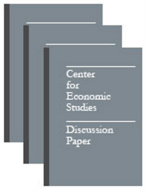
An official website of the United States government
Here’s how you know
Official websites use .gov
A .gov website belongs to an official government organization in the United States.
Secure .gov websites use HTTPS
A lock (
) or https:// means you’ve safely connected to the .gov website. Share sensitive information only on official, secure websites.
-
//
- Census.gov /
- Library /
- Census Working Papers /
- Workplace Segregation in the United States: Race, Ethnicity, and Skill
Workplace Segregation in the United States: Race, Ethnicity, and Skill
Workplace Segregation in the United States: Race, Ethnicity, and Skill
Abstract
We study workplace segregation in the United States using a unique matched employer employee data set that we have created. We present measures of workplace segregation by education and language, and by race and ethnicity, and . since skill is often correlated with race and ethnicity we assess the role of education- and language-related skill differentials in generating workplace segregation by race and ethnicity. We define segregation based on the extent to which workers are more or less likely to be in workplaces with members of the same group, and we measure segregation as the observed percentage relative to maximum segregation. Our results indicate that there is considerable segregation by education and language in the workplace. Among whites, for example, observed segregation by education is 17% (of the maximum), and for Hispanics, observed segregation by language ability is 29%. Racial (blackwhite) segregation in the workplace is of a similar magnitude to education segregation (14%), and ethnic (Hispanic-white) segregation is somewhat higher (20%). Only a tiny portion (3%) of racial segregation in the workplace is driven by education differences between blacks and whites, but a substantial fraction of ethnic segregation in the workplace (32%) can be attributed to differences in language proficiency. Finally, additional evidence suggests that segregation by language likely reflects complementarity among workers speaking the same language.
Others in Series
Working Paper
Working Paper
Working Paper
Share
Related Information
Some content on this site is available in several different electronic formats. Some of the files may require a plug-in or additional software to view.
 Yes
Yes
 No
NoComments or suggestions?


Top

